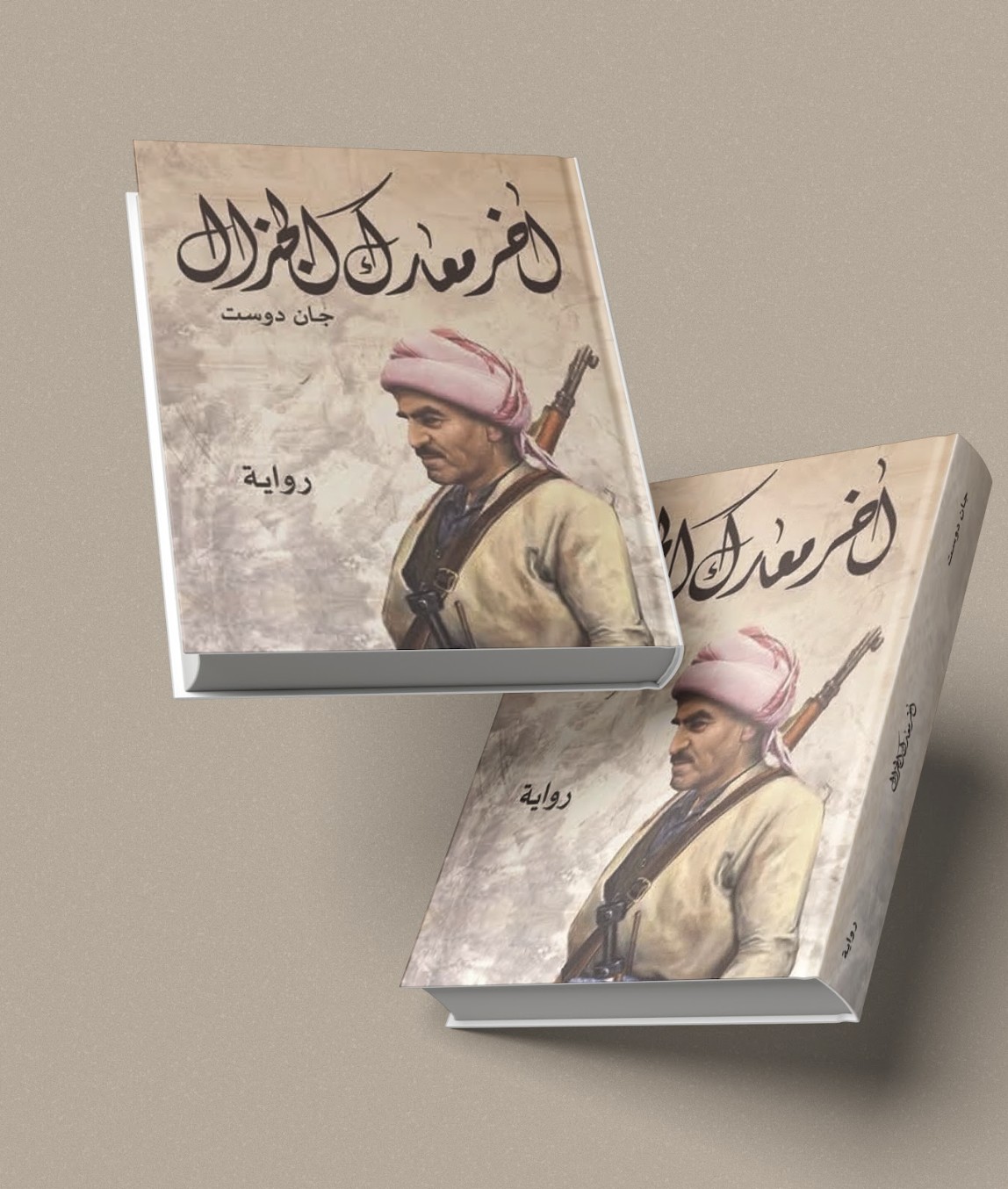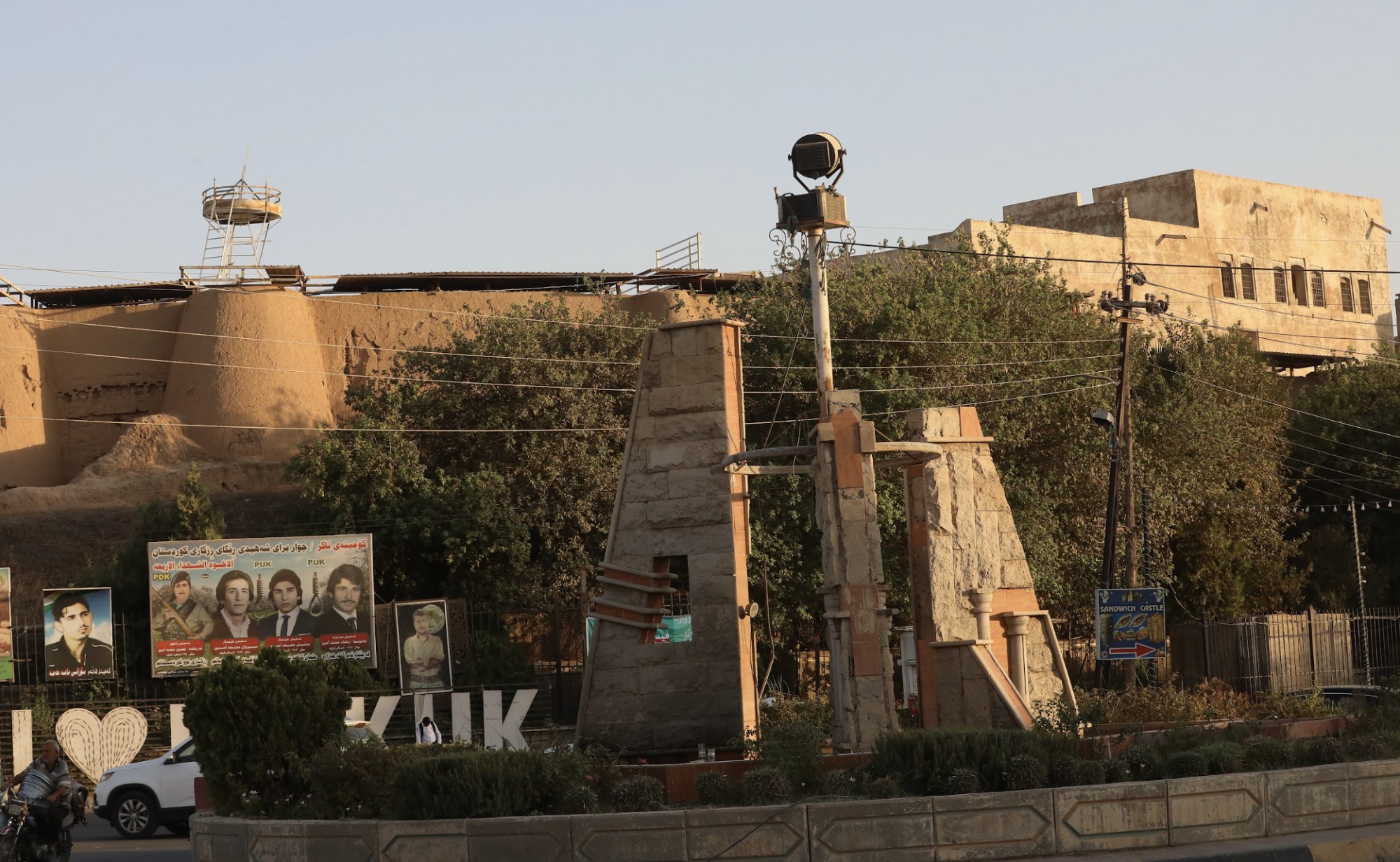For two long years, the cross laid on the ground, a symbol of the destruction caused by ISIS.
However, on one fateful day in November 2016, a group of peshmerga soldiers decided to take matters into their own hands. One of them, Arkan Saeed, carried the cross on his back, defying the dangers that lay ahead. As he shared his story with me, I could hear the emotion in his voice. “This is a day that I will forever be proud of,” he said.
As I eagerly awaited to hear more from him, there was a moment of silence on his end and soon I realized that I could hear him crying. He continued, “These are tears of joy.”
Arkan had risked his life not once, but twice in an attempt to restore the cross as ISIS snipers shot at him. Nevertheless, he persevered, and the iconic photograph of him carrying the cross became a symbol of hope and defiance in the face of adversity. The photo was presented to Pope Francis by Kurdistan Regional Government (KRG) Prime Minister Masrour Barzani during his most recent visit to the Vatican.
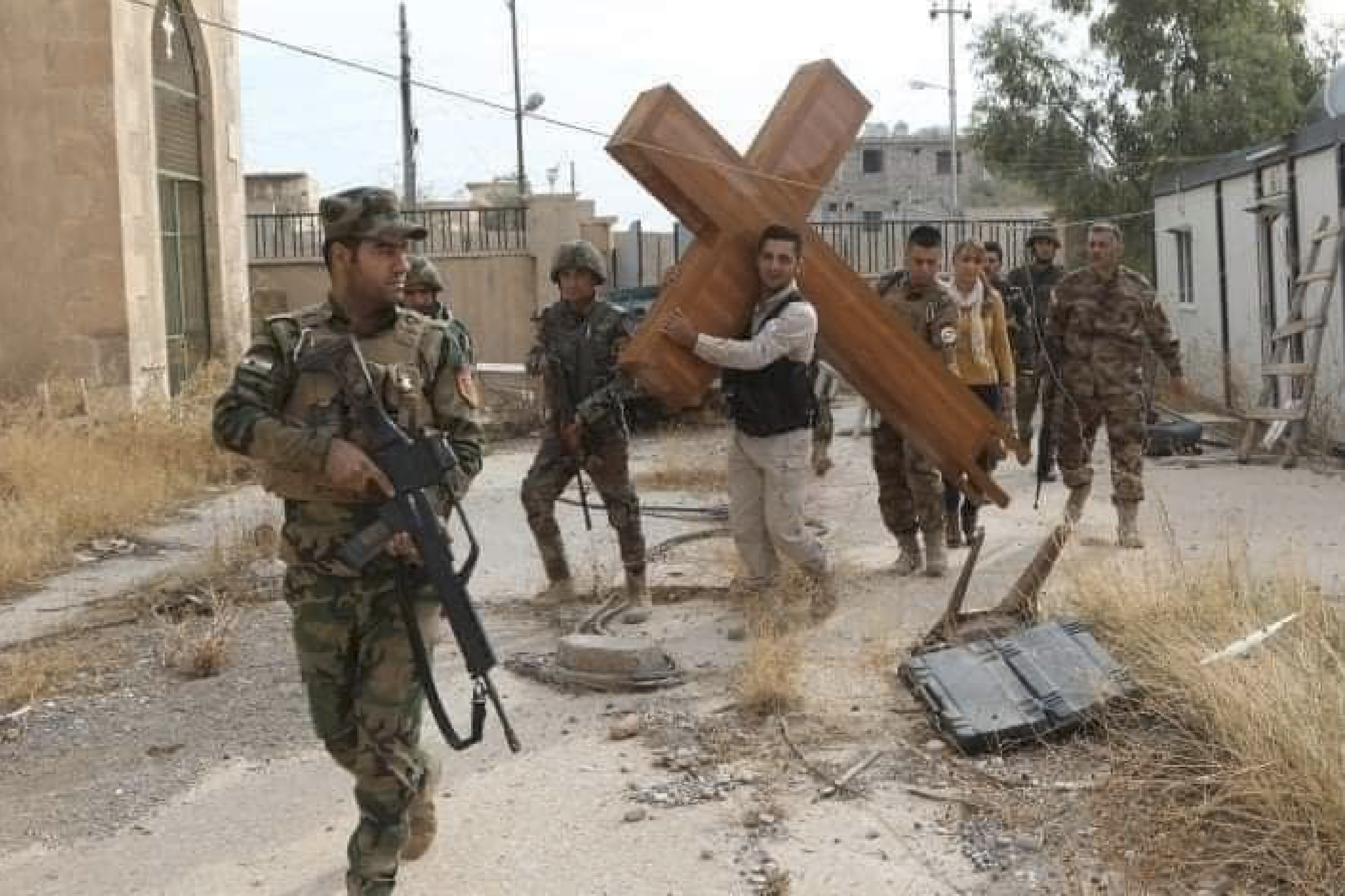
A group of Peshmerga fighters carrying a Cross to reinstall it on a church in Bashiqa after liberating the town from the ISIS (Nov. 2016).
Zerevani forces, led by Lieutenant Bahjat Selki, undertook the operation to restore the cross. They were the first to enter Bashiqa, Nineveh, in the Kurdistan Region of Iraq (KRI). Despite numerous bombs planted inside the church, their mission was clear and promising: to restore the church and bring peace and coexistence back to the region. With unwavering determination, they placed the cross on the roof of the church and rang the bell, a powerful symbol of unity and resilience.
“Before ISIS, Muslims, Christians, and Yezidis lived as brothers amongst each other. Today we are going to bring back that harmony,” said Arkan.
Thus, for the first time since the defeat of ISIS, the church bell would ring over Bashiqa – a town renowned for its history of religious coexistence before it was overrun by ISIS, who killed many Christians and Yezidis and destroyed all the holy temples.
In February 2020, Prime Minister Barzani visited the Vatican and presented Pope Francis with the picture of Arkan restoring the cross in Bashiqa. This symbolic gesture highlighted the immense destruction that ISIS had caused to the Christian community in the region and honored the thousands of peshmerga who had sacrificed their lives to restore the peace.
With 42 churches destroyed in Mosul and 43 in the Nineveh plain, the road to recovery was long and arduous. Many Christians had been displaced, unable to return to their homes due to the lack of security. But the restoration of the cross by peshmerga fighters served as a beacon of hope, a reminder that faith and resilience can help people overcome even the darkest of times.
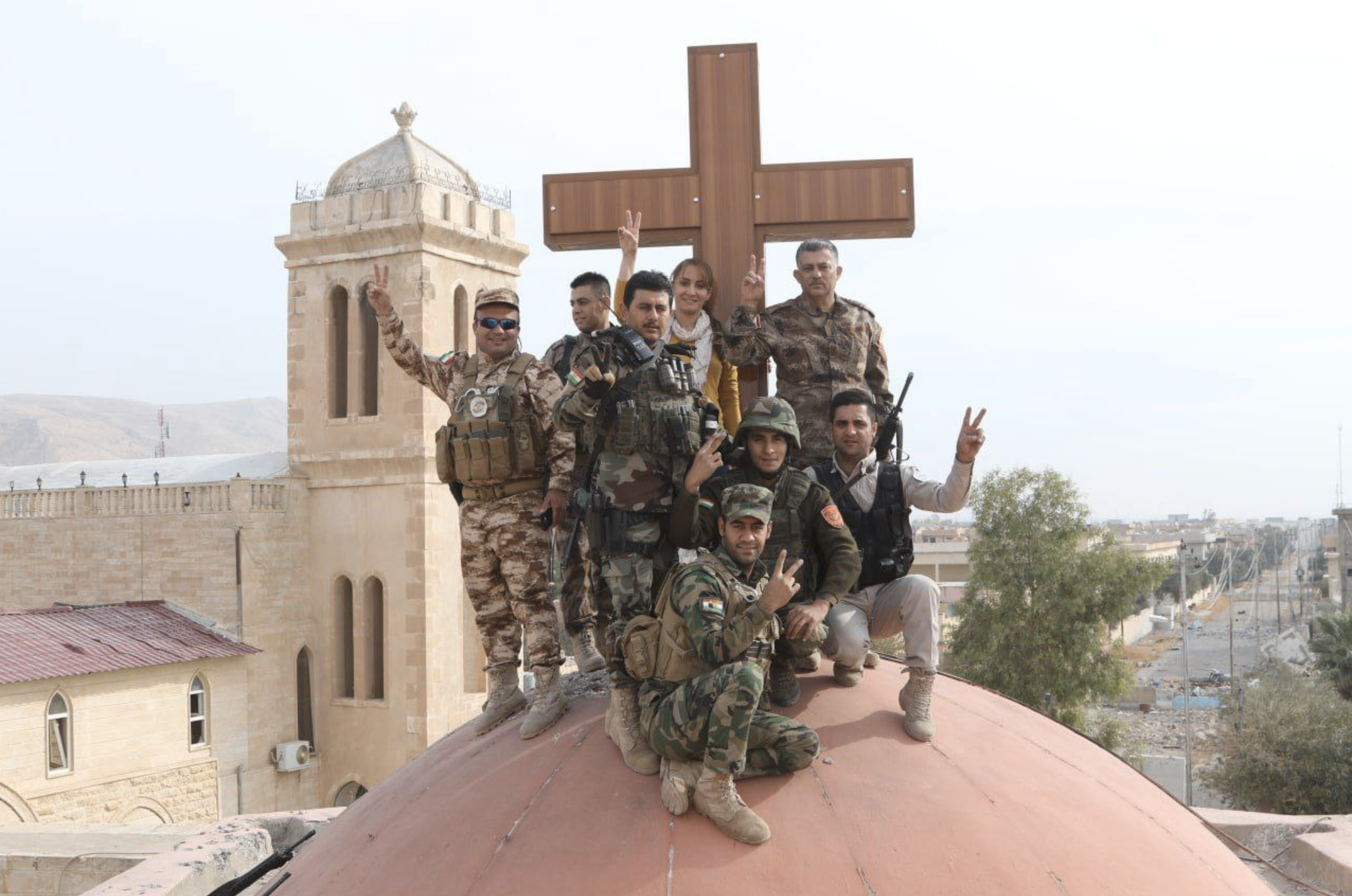
Roots of coexistence in the KRI
The KRI has a long history of coexistence and religious tolerance not seen in other parts of Iraq and Middle East. For decades, Kurds themselves belong to diverse religions, with people practicing different faiths regularly living in the same village or town. I remember my grandfather mentioning how there was once a Kaka’i (Yarsani) butcher who lived in Darband (150 kilemeters northeast Erbil) village of Balakayati district in the 1980s. Even though the majority of the residents in the area were Muslim, this man lived among them like a brother until he passed away.
There were also many Jews and Christians who lived in the area for many years.
There is a Jewish cemetery in Balakayti district, signifying the freedom of religion that has historically existed there. Some places in that area were also given Christian names. For example, in Nawanda village, there are two areas called Sar-dêr and Bin-dêr, with the work dêr meaning “church” in Kurdish. The elder from this area recounted that a thriving Christian community once lived there, exercising their faith without constraints.
As opposed to other areas in the Middle East, Kurdistan’s historical legacy is one of the major elements fostering this peaceful coexistence. Kurds have a long history of respecting harmony and religious and ethnic diversity. The preservation of amicable relations has been greatly aided by this cultural heritage, a strong feeling of community, and mutual respect.
On the contrary, ethnic and religious groups have experienced many atrocities in Iraq. Christians, who made up an estimated 1.5 million of Iraq’s population before 2003, have faced many forms of violence and became targets in a series of attacks. This forced most Christians to flee to the KRI, which became a safe haven for them. Many others left the country altogether, which has led to a major decline in the number of Christians residing in Iraq today. Moreover, Yezidis, a religious group indigenous to Kurdistan, also faced genocide and atrocities at the hands of ISIS. The Yezidis who did not manage to flee to the KRI were subjected to mass killings, rape, and sexual enslavement.
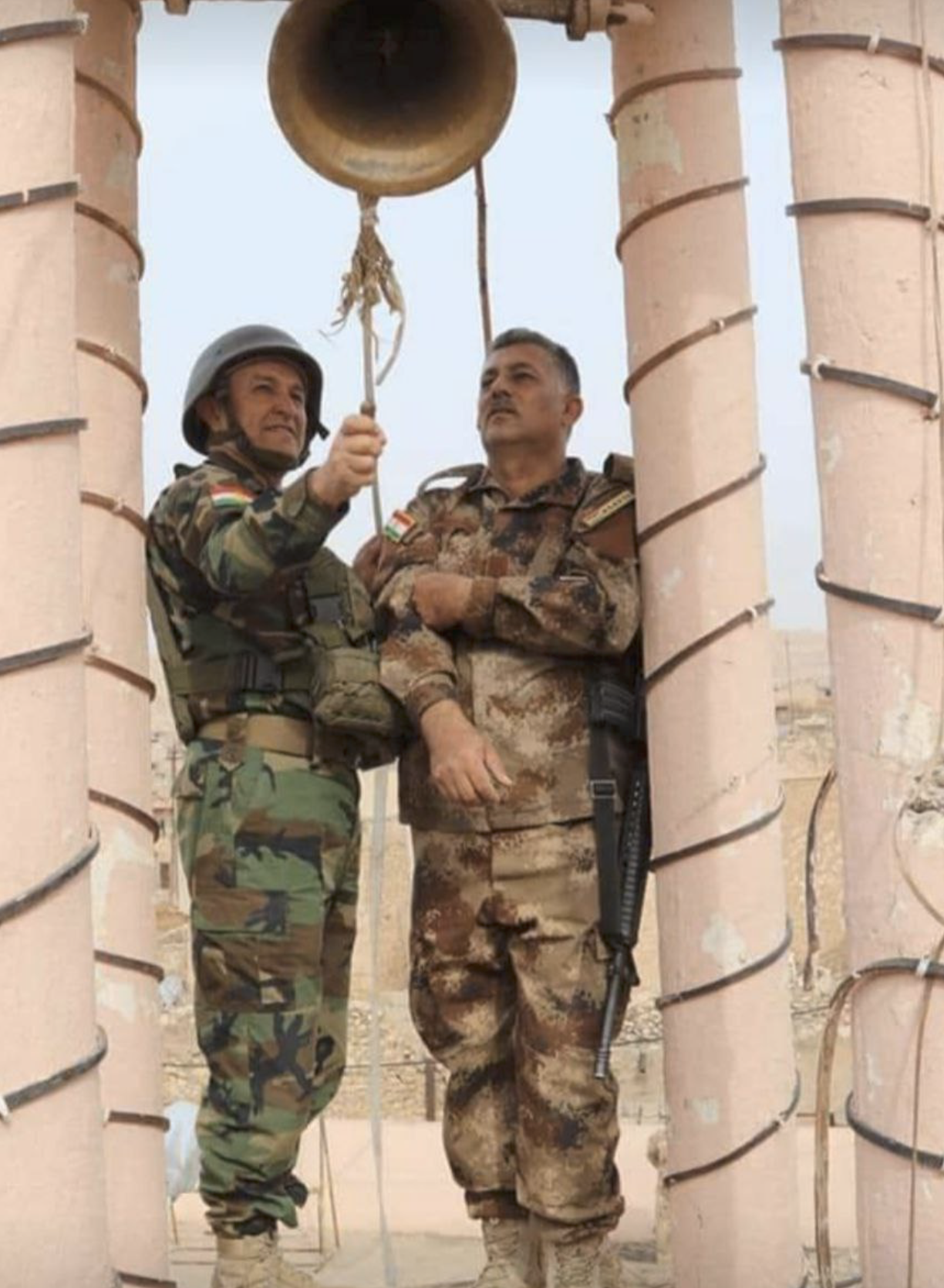
The coexistent model in the KRG
Coexistence and diversity are fundamental principles that shape KRG policy. The KRG has implemented initiatives that promote and protect religious freedom and minority rights. The government recognizes the importance of creating an inclusive society where all individuals, regardless of their religious beliefs, can live and thrive in peace. This is clearly evident in the region’s educational system, as schools prioritize teaching tolerance, respect, and understanding from a young age. By instilling these values early, they cultivate a culture of acceptance and appreciation for different religions. This emphasis on education as a means to foster harmony has played a significant role in shaping the region’s tolerant society.
Moreover, unlike many other regions, KRG officials reject the term “minority” when referring to ethnic and religious groups. Instead, they prefer to acknowledge them as integral and equal components of society. In 2015, the KRG Parliament passed a groundbreaking law aimed at ensuring political and cultural empowerment for minority groups, which was a significant milestone in recognizing and protecting the rights of these communities.
Despite the majority of the KRI’s population being followers of Islam, the Ministry of Endorsements and Religious Affairs has established a department for all religious groups, including Jews, Muslims, Yezidi, Kaka’i (Yarsani), Christians, and Zoroastrians. This remarkable initiative makes the KRG the only Muslim-majority government that officially protects the rights of all religious groups in the Middle East.
Furthermore, the commitment to diversity and coexistence is evident within the government itself, as the KRG works to ensure that minority groups are represented in key positions. This practice not only reflects the government’s dedication to inclusivity but also ensures that the voices and perspectives of all communities are heard and considered.
The roots of coexistence in the KRI run deep, with a rich history of diverse ethnic and religious communities living side by side. Despite external challenges and conflicts, the region has managed to foster a sense of mutual respect and tolerance among its inhabitants. The KRG’s commitment to inclusivity and cultural diversity has promoted a peaceful coexistence between different religious groups, allowing them to freely practice their faiths without fear of persecution. This legacy serves as a testament to the resilience and unity of the people of the KRI.
Goran Shakhawan is a Kurdish-American journalist and author based in the United States. He has worked for several Kurdish news outlets and was a former senior correspondent for Kurdistan24 in Erbil and Washington D.C.
